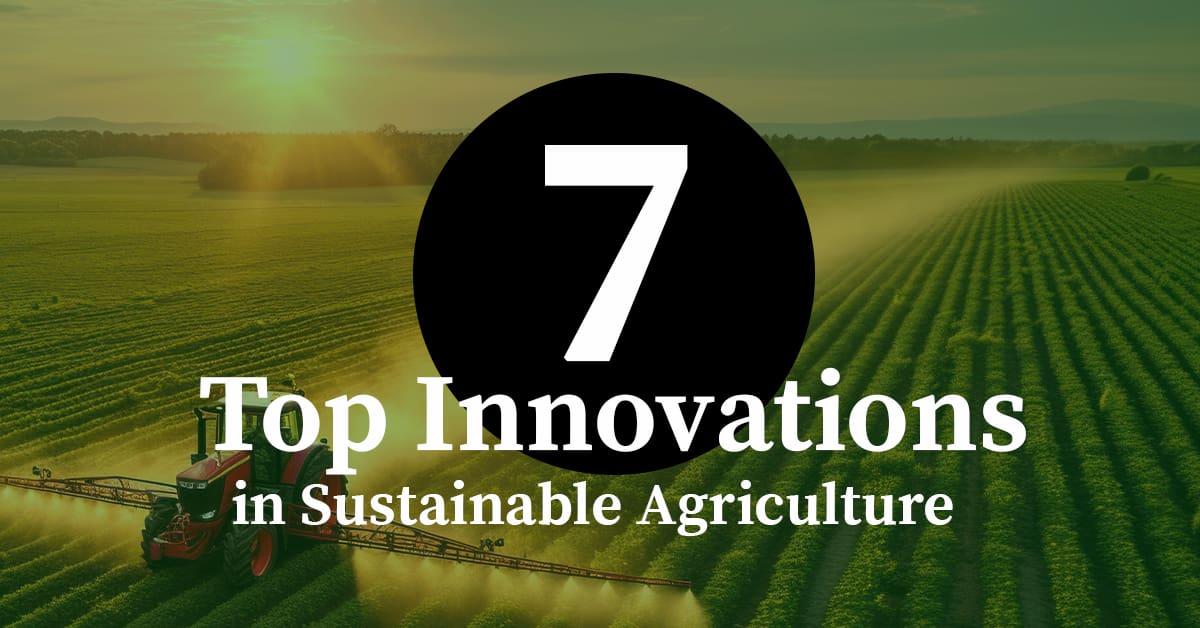As we close out 2023, we are looking toward what the new year will bring for the agriculture industry. This year has included lower investments in agriculture innovation, some bigger startups closing their doors and, as always, mergers and acquisitions. For 2024 agriculture trends, the AgriThority® team is seeing some consistency from prior years but also emerging trends.
- The push for biologicals, biostimulants in particular, continues. Biostimulants are today what seed treatments were in the 90s. Biostimulant development and launches are booming, and for good reason as global market growth is expected to reach 6.8 billion by 2028 and farmer biostimulant adoption is the highest globally of all the biological categories.
- Climate-smart farming is getting smarter. Measurements behind the carbon market are maturing. Researchers are learning how much carbon is sequestered and emitted, which will then allow companies to better measure the impact of their climate-smart farming innovation. Universities, companies and farmers are acquiring and sharing more knowledge. More ways to drive practices that minimize emissions on the farm are emerging. Innovations like those focusing on water utilization efficiency and nutrient optimization can become additional ways to drive carbon credits, which are an additional form of revenue for agriculture. Agriculture can become part of the solution for climate change.
- Precision ag is continuing to evolve. The onset of artificial intelligence (AI) and IoT (Internet of Things) are driving the integration of positioning, sensors and imagery into powerful analytics. Adoption, however, depends on the ability to demonstrate real benefits, especially ROI, for farmers so they can see the real benefits of all that technology.
- Regulatory is not evolving with the rate of innovation. Innovations are facing a growing complexity of the regulatory system for obtaining permits and registrations. In the U.S., albeit a predictable system, timelines for both permits and registrations are becoming longer. New concepts, like genetically modified microorganisms, are going through the learning phase with a higher requirements bar and changing demands. Finally, requirements regarding endangered species bring additional uncertainty to the process. In Brazil, a predictable, but long process environment, and a lack of definition for some product categories, especially biostimulants, are also a source of uncertainty. And Europe, despite efforts to generate harmonized legislation, remains complex, long, expensive and uncertain, even for biological products. Finally, important markets, such as China and India, are still not very transparent in their regulatory processes.
- Open innovation vs. internal research is a balancing act. The growth of biologicals is offering the opportunity for the AgChem industry to become more like pharmaceuticals where companies who do the research are acquired or their technologies are licensed. The good news for the larger crop input companies is they can focus on the development of these technologies, and the good news for the smaller companies is the increased potential to be acquired or to reach the market with stronger efforts toward adoption.
- Sustainability isn’t going away. For the ag industry, the topic of sustainability has become as relevant as the science behind the products. Instead of using a lens of technology when developing innovations, companies are increasingly looking at technologies through the lens of sustainability: Does it support the farmer, the consumer and the planet?
- Soil health is evolving. Conservation tillage and cover crops aren’t the only way to improve soil health. The soil health benefits of many biological products are now being shared. It’s well recognized the impact soil health will have on the future of agriculture, and it’s becoming more of a focus for agricultural product development. After water and air, soil is the new frontier.
- Artificial Intelligence (AI) will be more present in agriculture. With the nearly limitless ways to use AI, the agriculture industry is just starting to scratch the surface of what’s possible in agtech development. In 2024, more possibilities will be explored.
- Indian companies are entering the markets around the globe. India should become an increasing relevant player in the Ag industry, both as a manufacturing hub as well as an agtech provider. The India-based UPL success story is serving as a model to other Indian players to move into the international arena.
- AgTech funding will remain selective. After years of very high volumes, investment funding came down to more historical averages. Averages should remain this way in the foreseeable future. Access to funds, therefore, will require not only great ideas and innovative concepts, but also detailed planning and clear execution.
Overall, 2024 will be a shakeout year with companies making many strategic moves for the future. Everyone is trying to shore up business and gain new technologies. Competition in the agriculture industry is only increasing. More than 1,200 biological technologies were identified in 2023, and many more appear every day. These many new technologies aren’t only overwhelming from a corporate perspective as companies are considering how to stand out in a crowded market, but growers across the globe are continuing to get inundated with new technologies, new information and new mandates.
It is no longer enough to create a great product and sell it to farmers. Companies must shift mindsets from selling products to serving the farmers’ needs. This will help get new technologies and practices into use faster. Technology transfer has always been the core need with proven performance backed by science and with education throughout the channels. Growers rely on their trusted advisors. Those advisors must understand and believe in the performance of any new technology. Over the next year, we’ll dive into each one of these trends to show advancements and opportunities in each area.
To help your company capitalize on these trends and more in 2024, reach out to AgriThority® for your business, market and product development needs. Our international footprint, combined with our deep understanding of market and producer dynamics, helps you to leap hurdles and overcome barriers to set up your products for success.



